Attractions in Rome – The Perfect Check List for a Trip to Rome
- רומיו - סיורים והסעות ברומא
- Rome for a traveler Rome blog
- Attractions in Rome – The Perfect Check List for a Trip to Rome
We absolutely love to write about Rome, the eternal city, and we have (and will have) many articles about it on our blog. Rome is one of the most fascinating cities in the world and it provides a huge amount of reading material about it, and this is where we enter the picture! Today's article is about a very broad, important, general and basic topic – all the important attractions in Rome, must-see sites in Rome for travelers. How didn't we write about this before? Attractions in Rome by Romio!
מה עושים ברומא - המדריך השלם. המלצות רומא -רשימת אתרים ברומא למטייל, טיפים לרומא ועוד -המדריך השלם לרומא.
- Netanela Biton
- May 22, 2023
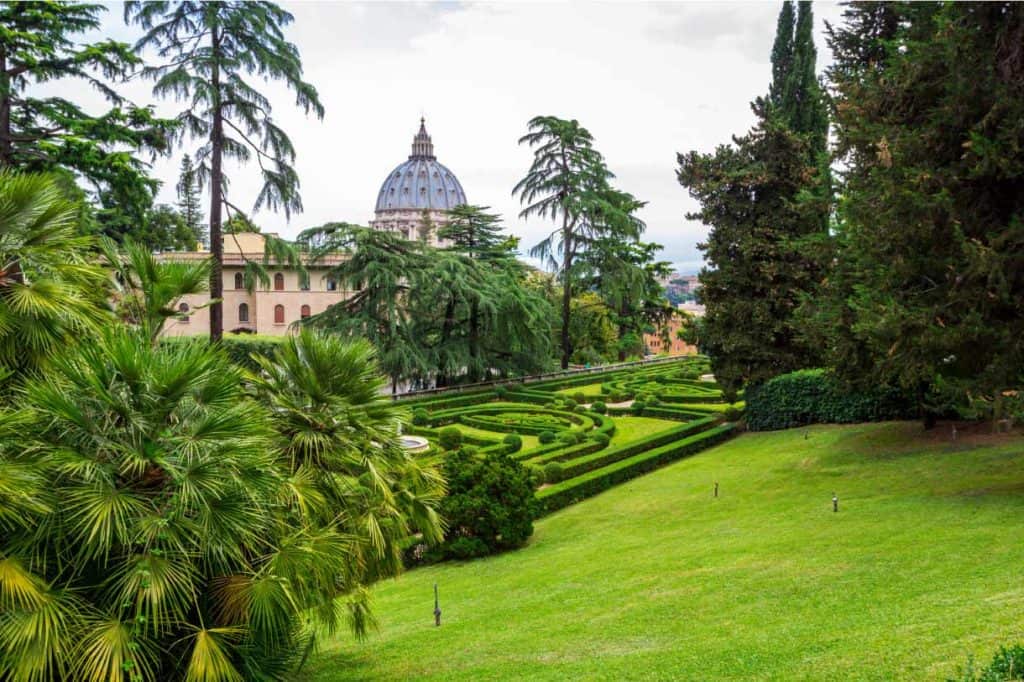
The Colosseum – The symbol of Rome and one of the seven wonders of the world. This is the largest ancient amphitheater built in history, and was used during the Roman Empire to show gladiator and animal fights, executions, dramas and more. It’s Also known as the “Flavian Amphitheatre”.
The Vatican – The Vatican City in Rome – The small state inside Rome. It is the seat of the Pope and the world center of Catholic Christianity.
The Vatican Museums – They consist of several art and archeology museums. They display the collections of the Catholic Church collected over hundreds of years, and there’s a belief that there are additional collections of great historical significance that the Vatican hides in the museums’ basements.
The Sistine Chapel – The most famous chapel in the world, located inside the Apostolic Palace. It is especially known for the wall paintings painted by Michelangelo during the Renaissance. The secret vote on the identity of the next pope (the Conclave). is carried out there.
The Vatican Gardens – A complex of enchanting botanical gardens, built in the 13th century and covering about half of the Vatican City. They include fountains and small churches. The gardens can only be visited with specific guidance of the Vatican.
St. Peter’s Basilica – This is one of the largest and most beautiful churches in the world, as well as one of the holiest sites for Christianity. It’s also known for its prominent dome seen from all over the city.
St. Peter’s Square – A huge and impressive square at the entrance to the Vatican and in front of St. Peter’s Basilica. Some consider it one of the most impressive squares in the world, where the Pope addresses the crowd at the weekly mass.
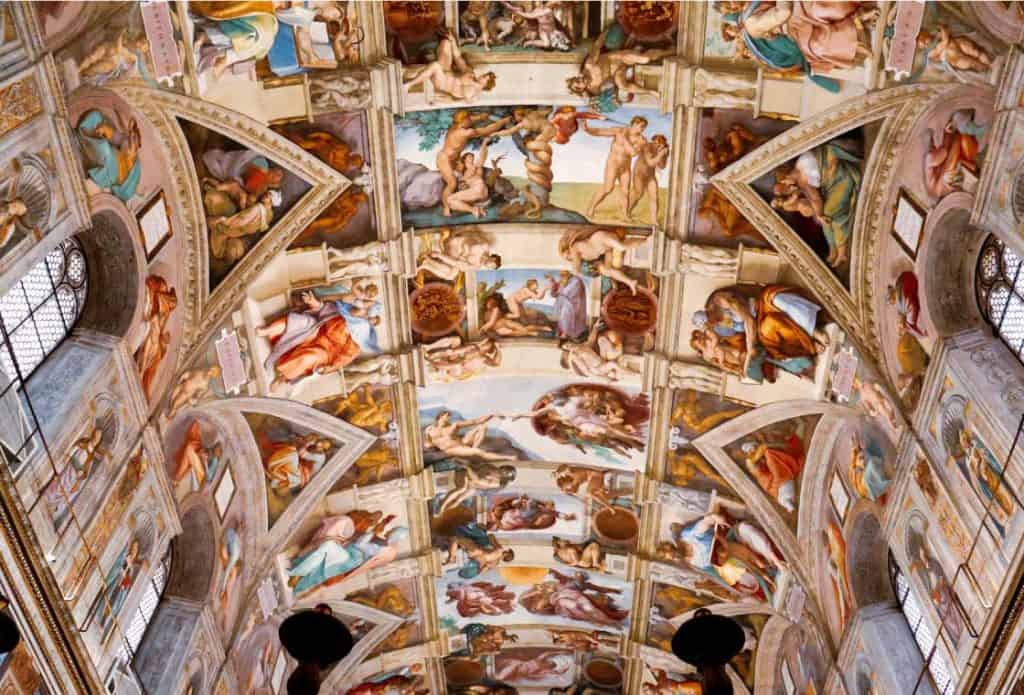
Campo de’ Fiori – One of the main and bustling squares in the city. It is especially known for its colorful farmers market during the day and as a place to go out to at night. The market opens every day except Sunday, until 14:00. It closes on rainy days because it’s not covered.
The Spanish Steps – Perhaps one of the most famous sites in Rome. It is an impressive 138-step staircase built in the 18th century, connecting Piazza di Spagna (Spain Square, named after the Spanish embassy located there) and the church of Trinita dei Monti. The famous fountain sculpted by the artist Pietro Bernini is placed in the piazza, at the foot of the stairs.
Piazza di Spagna – One of the most beautiful and well-known squares in Rome, designed in the Baroque style. It’s at the bottom of the Spanish steps.
The Trevi Fountain – Also known as the “Wishing Fountain”, placed in the city center. It’s the most famous fountain in Rome, from the Baroque period. According to the legend, tossing one coin through the left shoulder with the back to the fountain guarantees a return to Rome, a second coin – falling in love with a Roman, and a third coin – marring them.
MAXXI – National Museum of 21st Century Art – It consists of two museums, one for modern art and the other for architecture. The museum building itself garnered praise and awards for its design.
The Pantheon – A building that’s an architectural masterpiece. It was built during Ancient Rome and is considered the best-preserved building from its time. The Pantheon was once used as a temple to the gods and today some of the greats of Rome are buried there. Its dome is the tallest in Rome, even higher than the dome of the famous St. Peter’s Basilica.
The Roman Forum – Forum Romanum – Road of the emperors of Rome. The forum consists of important buildings from the ancient Roman period, which have been impressively preserved. it was the center of the social, religious and political life of the Romans in the past.
Piazza Navona – A central square from the Baroque period. One of the famous, largest and most beautiful squares in the city. Among other things, it has impressive statues and fountains, such as Bernini’s Fountain of the Four Rivers.
Santa Maria Maggiore – One of the largest and most magnificent churches in Rome and one of its four main churches, placed near the central station of Rome – Termini. Its space is sometimes used as a platform for rallies and various civil protests.
Trastevere – One of the most beautiful neighborhoods in the city – Colorful, bohemian, and full of life with many hangouts (especially restaurants) and lively nightlife. This is THE place to be in the evenings, especially on weekends.
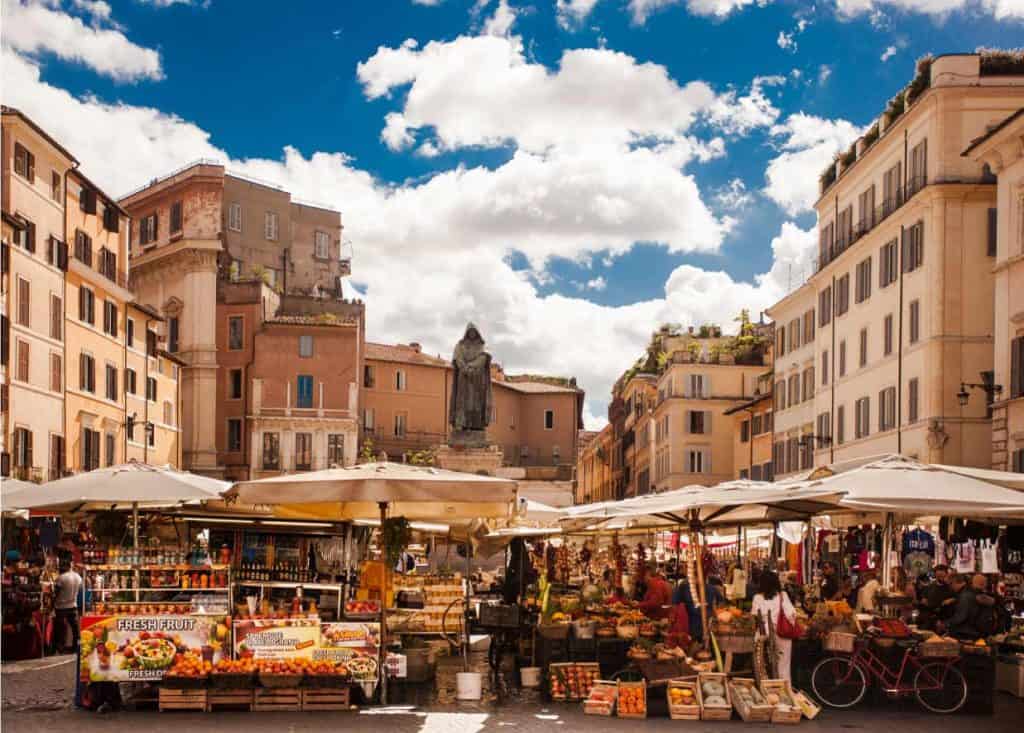
The Victor Emmanuel II (Vittorio Emanuele II) National Monument – Also known as “Altar of the Fatherland”. It’s a huge national monument in the center of Piazza Venezia, dedicated to the first king of united Italy, Vittorio Emanuele II, Located on the Capitoline Hill.
The Capitoline Museums – The central civic museum in the city, located on the Capitoline Hill. This is one fascinating complex that includes several museums of art and architecture.
The Palatine Hill – The ancient hill is the most central of the seven hills in Rome, and also the most famous of them. It was considered a desirable residential area in Ancient Rome and whole city can be seen from it. It borders the Roman Forum complex and the Colosseum.
Baths of Caracalla – Ancient public baths, the second largest in the city. They were built in the 3rd century AD and were also used as a leisure space for sports, studies, relaxation and more.
Piazza del Popolo – “People’s Square” in Italian. This is an enormous oval square, one of the most beautiful and touristic in the city. It’s at the end of the “Via del Corso” shopping street, and even today is used as the people’s square, with performances, rallies and protests that are concentrated there. It used to be the gateway to Ancient Rome.
Piazza del Campidoglio (The Capitol square) – The first square built according to Michelangelo’s criteria, and one of the most visited areas in Rome. It is located on Capitoline Hill, the most important of the seven hills of the city.
The Catacombs of Rome – Former underground burial spaces, in Rome and beyond. In Rome, these spaces operated from the 2nd to the 5th century AD and they are some of the most significant concentrations of Christian catacombs.
Piazza Venezia – One of the largest and most beautiful squares in Rome.
The Victor Emmanuel II National Monument, also known as the “wedding cake” due to its shape, is placed in its center. This is the central square that connects four important streets and is named after the Venetian Palace that is located there.
Termini Station – The main train station. It is one of the largest in Rome and in Europe, and is considered a success from an aesthetic point of view as well. It’s named after an area of the same name.
Monti neighborhood – A beautiful and central neighborhood that is the first district in Rome. Known as a “hipster” and fun district with vintage shops, special beers and more.
Villa Doria Pamphili – A villa from the 17th century located on a hill. The most beautifully designed and largest public park in Rome is around it.
The Tiber River – A historic river, the third longest in the country. it served as a source of fresh water for Romans in the past, and as an important route for trade and transportation.
Via Condotti – An ancient, busy and chic street in the heart of the city. This is the shopping street for those looking for high fashion.
Quattro Fontane (the Four Fountains) – The concentration of four beautiful fountains from the late Renaissance period: the River Anien, the Tiber River, the Goddess Juno and the Goddess Diana.
Temple of Jupiter Optimus Maximus – The most important temple in Ancient Rome, dedicated to the god Jupiter. It stands on the Capitol Hill in the center of the city.
Trinita dei Monti – Its official name is Santissima Trinita dei Monti. It is a huge Catholic church in Gothic style in the center of Rome. It was established in the 16th century and is located above the Spanish Steps leading to Piazza di Spagna.
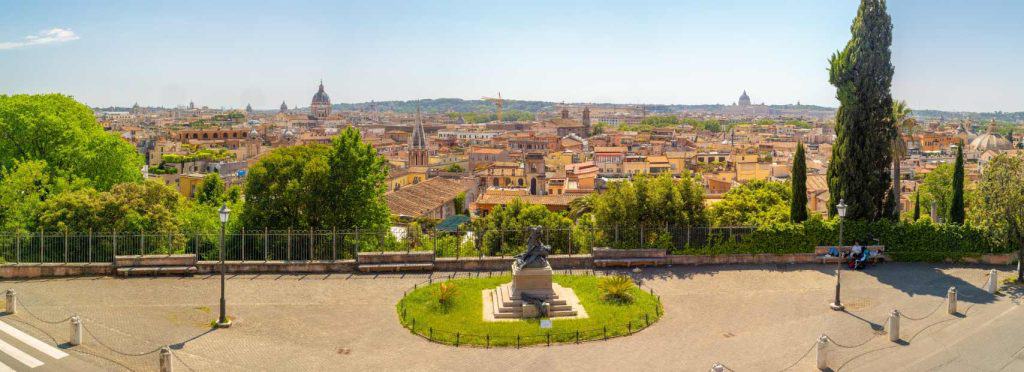
Santa Maria del Popolo – A small Augustinian basilica. Its name means “Basilica of the Holy Mary of the People”. It’s located on the north side of Piazza del Popolo, one of the most famous Roman squares.
Via Appia Antica – The first most important and famous road paved from the city of Rome. It was built in 312 AD and connected Rome to Campania, southern Italy and other distant regions of Italy.
Via Cola di Reinzo – An important and long street that crosses the neighborhood of Prati near the Vatican. It is full of restaurants and shops and ideal for food and wine tours.
Tiber Island – (Isola Tiberina) – A small island in the middle of the Tiber River. It is in the heart of the city, between Trastevere and the Jewish Ghetto. Today it houses two small hospitals, a handful of shops and an ice cream place.
Circus Maximus (Circo Massimo) – A field that was used as a circus for the entertainment of the crowd, horse races and gladiator fights in ancient times. Its name means “the biggest arena” and it’s indeed one of the biggest stadiums ever built.
Arch of Constantine – A triumphal arch near the Colosseum dedicated to Emperor Constantine. It is the largest surviving triumphal arch in Rome and the last important monument in Imperial Rome.
Pincio Terrace (Terrazza del Pincio) – A particularly stunning terrace from the 19th century. It offers a beautiful view of the city, overlooking Piazza del Popolo and St. Peter’s Basilica.
Aventino Hill (Aventine) – The Orange Garden – One of the seven hills Ancient Rome was built on. This is a particularly romantic hill with a blossoming orange garden and one of the most beautiful views over the center of Rome and the Vatican.
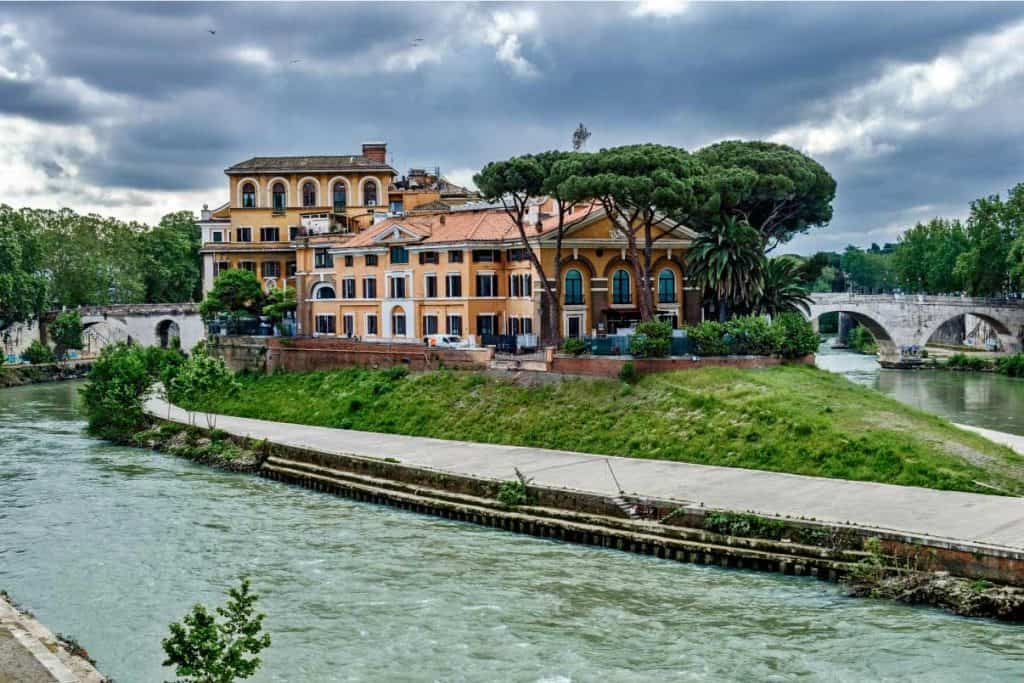
Porta Portese Market – An ancient gate in the city, near the Trastevere neighborhood. This is the oldest, best known and largest flea market in the city, active only on Sundays during the day.
Castel Sant’Angelo and Bridge Sant’Angelo – a building near the Vatican whose name means “Castle of the Holy Angel”. It was used as a mausoleum and fortress in Ancient Rome, and is now a museum. A beautiful bridge stands in front of the castle and over the Tiber River, whose name means “Bridge of the Angels”, with angel sculptures by Bernini.
Villa Borghese – One of the biggest public parks in Rome. This is a stunning designed park built in the 17th century. It’s located near the Spanish Steps and Piazza del Popolo.
Borghese Gallery – A small art gallery and museum in Villa Borghese Pinciana. The gallery contains one of the largest and most prestigious private art collections in the world.
Quirinale Hill and Quirinale Palace – The highest hill in Rome, near the Trevi Fountain. The Quirinale, a historic building and one of the three official buildings of the president, stands on it. It used to be the residence of the popes and the former royal palace, and is now the official residence of the president.
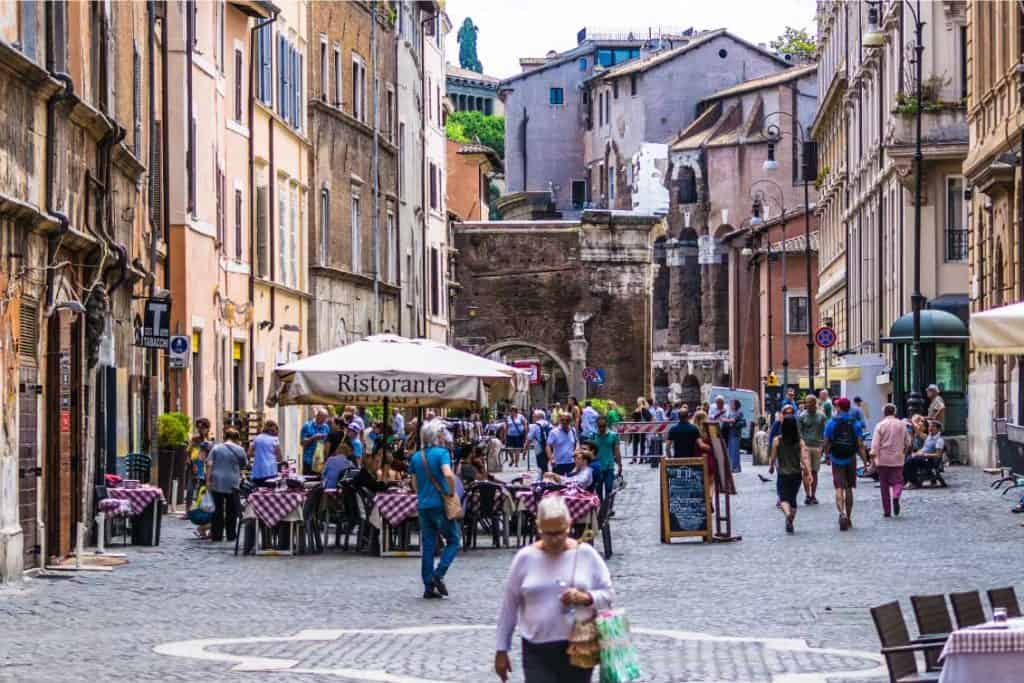
Roman Ghetto – The Jewish Ghetto of Rome – A magical area that is also known as the Jewish Ghetto and the Jewish Quarter. It was established in 1555 in the Sant’Angelo district, between the Tiber River and Piazza Venezia. In those days, Jews were forced to live there for about 242 years as a means of punishment against them.
The Turtle Fountain (The Fontana delle Tartarughe) – A small, beautiful and special fountain that was built in the ghetto during the late Renaissance. The turtles that decorate it were added at a later stage by Bernini.
The Great Synagogue of Rome (Tempio Maggiore di Roma) – The biggest most beautiful synagogue in Rome. It first opened in the ghetto in 1904, and is very popular among Israeli travelers.
The Jewish Museum of Rome – A small museum located in the complex of the Great Synagogue of Rome. It is dedicated to Italian Jewry in general and Rome in particular. It presents menorahs, sacred utensils, works of Italian Jews and so on.
Chabad of Rome – The main Chabad House is in a beautiful building in Piazza Bologna, a Jewish area with a popular square. It offers dinners on Saturdays and holidays and a variety of activities for all ages.
The statue of Moses (Mosè di Michelangelo) – A famous marble statue, the work of Michelangelo from the 16th century. It stands in the church of San Pietro in Vincoli (“Saint Peter in Chains”) in the center of Rome. This is one of the pearls of Italian art.
The Rose Garden – A public, romantic and floral garden on Aventine Hill and within walking distance of the Colosseum. It was inaugurated in 1931 and has more than 1000 roses, many of which were donated from other countries.
Arch of Titus – A triumphal gate from the 1st century AD, located in the Roman Forum. It was built in honor of Emperor Titus who defeated the Jews in the great rebellion against the Roman Empire in the Land of Israel.
Mouth of Truth (Bocca della Veritá) – A well-known marble statue with a face carved into it. It was probably built in the 1st century AD, and was considered a type of polygraph in those days. It may have been part of a fountain at the time.
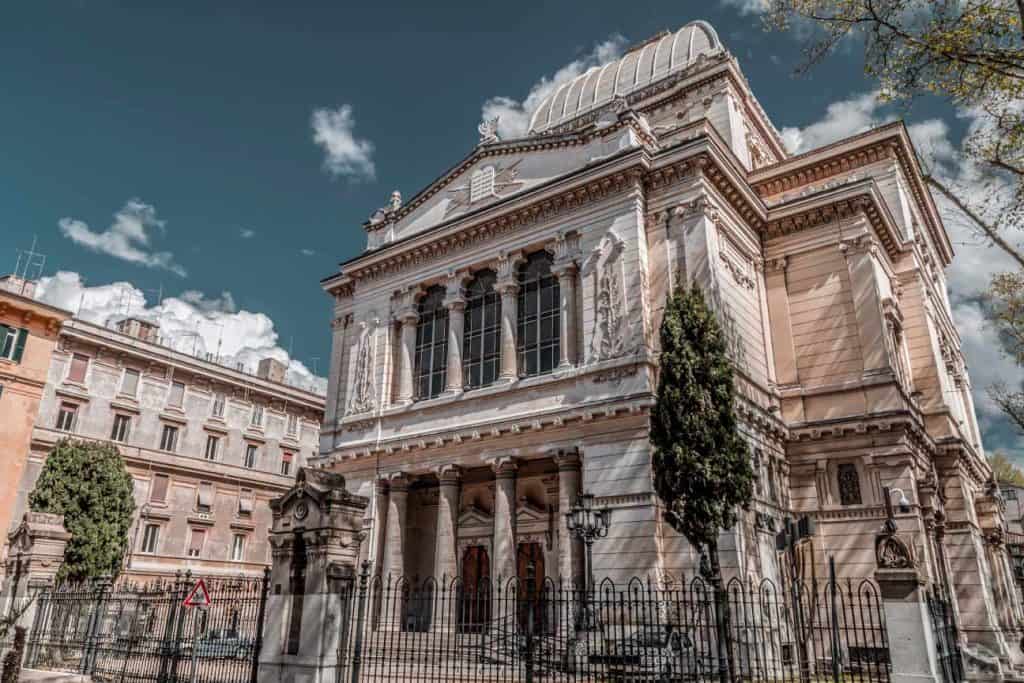
All roads lead to Rome for a reason. It has everything – breathtaking streets, magnificent churches, romantic fountains, impressive statues…
The capital of Italy is extremely rich in history, art and architecture, and every corner of it is a treat for the eyes and the soul. It is not for nothing that Rome is one of the most beloved cities in Europe and the world – it’s remarkable in its beauty and character. If you’re visiting Rome for the first time, don’t forget to go through this list of attractions and participate in our guided tours among its many treasures. See you in Rome! by Romio, with love. 🧡




